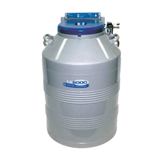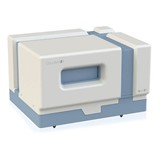To understand this question, you first must gain an understanding of what asthma is, how it develops compared to normal defense mechanism for fighting parasitic attacks.
Unlike other respiratory conditions like COPD and Bronchiectasis, asthma is actually a hypersensitivity condition and we have similar defense systems in our lung as what we do in our digestive system. This is all connected through our circulatory system where the immune system works it’s magic. Let me explain this further and how it all works.
What’s the Adaptive Immune System and How It Relates to Asthma?
Without going into too much detail, it is believed that asthma is usually developed from the 1st exposure to a specific parasitic attack and how the adaptive immune system combats this type of invasion.
The adaptive immune system is the part of our defense system which reacts to new infection or attack from bacteria, viruses, parasites, etc…
When our body is attacked for the 1st time from a new infection, the adaptive immune system can take between 4-7 days to become activated against the infection or attack (when activated this takes a much shorter period). Then these cells produce memory cells so that these cells are produced quickly every time that the infection or attack occurs.
What is the Difference Between Normal Defense and Asthmatic Defense?
When a parasite attacks the host, it secretes fluid (proteins, enzymes and antienzymes) which break down the bond between the skin cells (called epithelium) to cause bleeding so that the parasite can then absorb the nutrients from the blood for feeding on.
Normal Defense to Parasitic Attacks
In the case of people without asthma, it is believed that the 1st attack by a specific parasite (like dust mites, fungus, etc…) is from a large invasion.
As a means of combating this attack the body (both the respiratory and digestive system) does the following 3 steps:
1. Hypersecretion of mucus – The 1st line of defense is for the mucus globules in the skin cells (called epithelium) to release a larger, thicker amount of mucus to help stop the fluid from reaching the skin cells (epithelium) and causing damage.
2. Inflammation of the tissue/skin cells (called epithelium) – If the secretion from the parasites reach the tissue/skin cells, then the circulatory system releases histamine into the blood. This helps to open up the walls of the blood vessels so as to release platelets and white blood cells into the tissue to fight the secretions, stop the bleeding and heal the damage.
3. Cough – A cough uses a combination of built up pressure by closing the vocal cords and expanding the diagram, which then has an explosive release of air as the vocal cords suddenly open.
In the case where either the mucus starts to build up or the secretions start to irritate the skin/tissue, then a cough is employed to help to both expel the parasites from the lungs through a process called wind sheering (where the top layer of the mucus containing the parasites is expelled from the body) and this also assist to mobilise the mucus with the contamination up to the throat to be coughed or swallowed naturally.
Most of the time, dust mites are removed from the body simply with mucus and we don’t actually feel any major symptoms unless we have a respiratory condition where the mucus builds up and can’t be removed.
Asthma Defense to Parasitic Attacks
In the case of someone who develops asthma, it is believed that the 1st attack by a specific parasite (like dust mites, fungus, etc…) is from a small number of parasites.
Because of this, the defense uses the same 3 forms of defense mechanisms as mentioned in the "Normal Defense to Parasitic Attack" above, plus 1 more form of defense .
Because of the small number of parasites, the lungs decide to employ a 3rd form of defense to help remove the parasites quicker and help reduce the amount of mucus and inflammation of the tissue. This in turn has the potential to reducing the damage from the parasitic attack.
This form of defense is known Bronchoconstriction - This is where the muscles of the airways spasm or contract, to assist in both the removal of the mucus from the airways as well as assist in amplifying the effect of the cough, to remove the parasites.
The asthma attack and bronchoconstriction are only employed if the secretions reach the skin/tissue within the organ like the lungs.
How this Attack Leads to Asthma from Food
Now, you're probably asking how everything above relates to eating food and getting an asthma attack.
Well, the outcome for developing asthma from the 1st attack from this type of parasite and the way the body reacts to the invasion determines how the body’s adaptive immune system is set up for all future attacks.
In the case of asthma, the adaptive immune system develops memory cells for employing this defense mechanism for this type of parasitic attack (which cause Bronchoconstriction) for all future attacks.
Because the defense mechanism is based in the immune system, which works hand in hand with the circulatory system, it affects the whole body, not just 1 or 2 organs.
So every time that secretions from this type of parasite are experienced in any part of the body which employs a similar defense mechanism (i.e. the lungs, liver, kidneys, pancreas, intestines, even the skin), then any part of the body can experience an effect, similar to an asthma attack for this part of the body as well as others, some examples include:
1. An asthma attack in the lungs,
2. A bout of vomiting or diarrhea from the digestive system,
3. A bout of rashes and inflammation of the skin,
It isn’t only limited by the secretions of a parasite, if chemicals in food (i.e. preservatives, additives, etc… ) are similar to the secretions of the parasite, then it can induce an asthma attack, or make you feel sick or both at the same time.
This is why is it essential to consult with an immunologist to get this important information and understand which preservatives may affect you.
Another important point is to have healthy lungs with a health mucociliary escalatory. The reason being that the mucociliary escalator traps and removes up to 90% of foreign particles and is the 1st line of defense.
If this isn’t running smoothly or is blocked up, then there is a higher chance of parasites, bacteria, viruses and particles will become deposited into the mucus. This may lead to a higher chance of either an asthma attack (i.e. coughing, hypersecretion of mucus, inflammation and bronchoconstriction) or a respiratory infection (i.e. an asthma attack minus the bronchoconstriction).
Another important fact is that it isn’t actually pollen which causes asthma attacks, but the secretions absorbed by the pollen. These secretions are released from the pollen as they are deposited in the mucociliary escalator which isn’t flowing smoothly. These secretions may then be deposited onto the skin/tissue in the lungs causing an asthma attack.
I know the article was long, but I hope you found it informative and helpful in understanding the mystery behind why eating certain foods can lead to an asthma attack.
References
1. Alvaro A. Cruz, MD,a,b Philip J. Cooper, MD, PhD,b,c,d Camila A. Figueiredo, PhD,b,e Neuza M. Alcantara-Neves, MD, PhD,b,e Laura C. Rodrigues, MD, PhD,b,f and Mauricio L. Barreto, MD, PhDb,g Global issues in allergy and immunology: Parasitic infections and allergy, J ALLERGY CLIN IMMUNOL VOLUME 140, NUMBER 5,
NOVEMBER 2017 https://www.jacionline.org/article/S0091-6749(17)31509-9/pdf
2. Steven A. Saenz, Mark C. Siracusa, Jacqueline G. Perrigoue, Sean P. Spencer, Joseph F. Urban Jr, Joel E. Tocker, Alison L. Budelsky, Melanie A. Kleinschek, Robert A. Kastelein, Taku Kambayashi, Avinash Bhandoola & David Artis. IL25 elicits a multipotent progenitor cell population that promotes TH2 cytokine responses. Nature, 2010; DOI: 10.1038/nature08901
3. Manoel MedeirosJrMDa, Joanemile P.FigueiredoMDa, Maria C.AlmeidaMDa, Maria AnaliaMatosMDa, Maria I.AraújoMD, PhDadAlvaro A.CruzMD, PhDaAjax M.AttaMD, PhDcMarco Antonio V.RegoMD, PhDbAmélia R.de JesusMD, PhDaErnesto A.TaketomiMD, PhDeEdgar M.CarvalhoMD, PhDad, Schistosoma mansoni infection is associated with a reduced course of asthma, The Journal of Allergy and Clinical Immunology May 2003 Volume 111, Issue 5, Page 947-951 https://www.jacionline.org/article/S0091-6749(03)80119-7/fulltext
4. Julian Hopkin, Immune and genetic aspects of asthma, allergy and parasitic worm infections: evolutionary links, Institute of Life Science, School of Medicine, Swansea University, 08 April 2009 https://doi.org/10.1111/j.1365-3024.2009.01104.x















-160x160-state_article-rel-cat.png)










-160x160-state_article-rel-cat.png)






